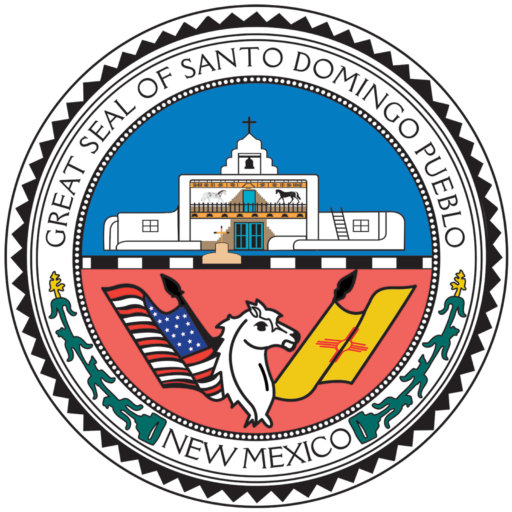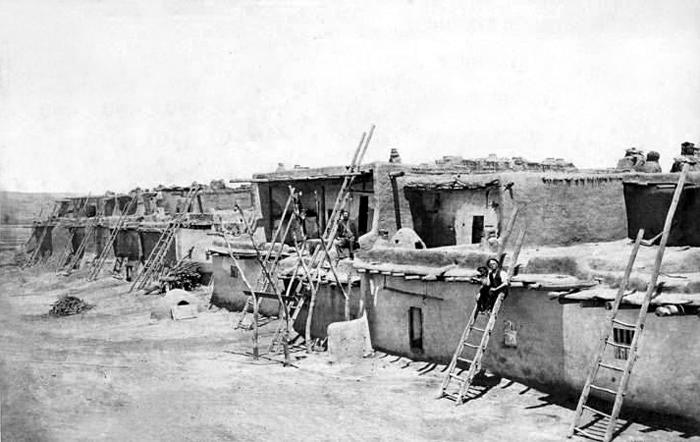| Annual Drinking Water Quality Report | |||||||||||||||||||||||||
| Is my water safe? | |||||||||||||||||||||||||
| We are pleased to present this year’s Annual Water Quality Report (Consumer Confidence Report) as required by the Safe Drinking Water Act (SDWA). This report is designed to provide details about where your water comes from, what it contains, and how it compares to standards set by regulatory agencies. This report is a snapshot of last year’s water quality. We are committed to providing you with information because informed customers are our best allies. | |||||||||||||||||||||||||
| Do I need to take special precautions? | |||||||||||||||||||||||||
| Some people may be more vulnerable to contaminants in drinking water than the general population. Immuno-compromised persons such as persons with cancer undergoing chemotherapy, persons who have undergone organ transplants, people with HIV/AIDS or other immune system disorders, some elderly, and infants can be particularly at risk from infections. These people should seek advice about drinking water from their health care providers. EPA/Centers for Disease Control (CDC) guidelines on appropriate means to lessen the risk of infection by Cryptosporidium and other microbial contaminants are available from the Safe Water Drinking Hotline (800-426-4791). | |||||||||||||||||||||||||
| Where does my water come from? | |||||||||||||||||||||||||
| Groundwater from the Rio Grande Alluvial aquifer is the primary source of drinking water for the Santo Domingo Pueblo. A second well was drilled in 2013 and connected to the water system in 2014. Both wells are approximately 1000 feet deep and are east of I-25. These wells connect to one pumphouse for treatment and distribution. The disinfectant sodium hypochlorite (chlorine) is injected into the water prior to entering the distribution system. | |||||||||||||||||||||||||
| Source water assessment and its availability | |||||||||||||||||||||||||
| Then Environmental Protection Agency performed an assessment of our source water in January of 2010. A source water assessment identifies potential sources of contamination to the drinking water. The assessment was unable to find any potential sources of contamination, but our aquifer is considered highly susceptible to contamination because it’s composed of unconsolidated sand and gravel, buried alluvial valleys, alluvial terraces, and is active. Please contact us at 505-465-0055 for more information on the assessment. | |||||||||||||||||||||||||
| Why are there contaminants in my drinking water?
Drinking water, including bottled water, may reasonably be expected to contain at least small amounts of some contaminants. The presence of contaminants does not necessarily indicate that water poses a health risk. More information about contaminants and potential health effects can be obtained by calling the Environmental Protection Agency’s (EPA) Safe Drinking Water Hotline (800-426-4791). |
|||||||||||||||||||||||||
| How can I get involved? | |||||||||||||||||||||||||
| The Santo Domingo Tribal Utilities Department participates in the resource fairs throughout the year and advertises meetings and provides information via mailings and the tribal newsletter. | |||||||||||||||||||||||||
| Additional Information for Lead | |||||||||||||||||||||||||
| If present, elevated levels of lead can cause serious health problems, especially for pregnant women and young children. Lead in drinking water is primarily from materials and components associated with service lines and home plumbing. Santo Domingo Pueblo is responsible for providing high quality drinking water, but cannot control the variety of materials used in plumbing components. When your water has been sitting for several hours, you can minimize the potential for lead exposure by flushing your tap for 30 seconds to 2 minutes before using water for drinking or cooking. If you are concerned about lead in your water, you may wish to have your water tested. Information on lead in drinking water, testing methods, and steps you can take to minimize exposure is available from the Safe Drinking Water Hotline or at http://www.epa.gov/safewater/lead.
|
|||||||||||||||||||||||||
| Water Quality Data Table | |||||||||||||||||||||||||
| In order to ensure that tap water is safe to drink, EPA prescribes regulations which limit the amount of contaminants in water provided by public water systems. The table below lists all of the drinking water contaminants that we detected during the calendar year of this report. Although many more contaminants were tested, only those substances listed below were found in your water. All sources of drinking water contain some naturally occurring contaminants. At low levels, these substances are generally not harmful in our drinking water. Removing all contaminants would be extremely expensive, and in most cases, would not provide increased protection of public health. A few naturally occurring minerals may actually improve the taste of drinking water and have nutritional value at low levels. Unless otherwise noted, the data presented in this table is from testing done in the calendar year of the report. The EPA or the State requires us to monitor for certain contaminants less than once per year because the concentrations of these contaminants do not vary significantly from year to year, or the system is not considered vulnerable to this type of contamination. As such, some of our data, though representative, may be more than one year old. In this table you will find terms and abbreviations that might not be familiar to you. To help you better understand these terms, we have provided the definitions below the table. | |||||||||||||||||||||||||
| MCLG | MCL, | ||||||||||||||||||||||||
| or | TT, or | Your | Range | Sample | |||||||||||||||||||||
| Contaminants | MRDLG | MRDL | Water | Low | High | Date | Violation | Typical Source | |||||||||||||||||
| Disinfectants & Disinfectant By-Products | |||||||||||||||||||||||||
| (There is convincing evidence that addition of a disinfectant is necessary for control of microbial contaminants) | |||||||||||||||||||||||||
| Chlorine (as Cl2) (ppm) | 4 | 4 | 1.73 | 0.04 | 1.73 | 2014 | No | Water additive used to control microbes | |||||||||||||||||
| TTHMs [Total Trihalomethanes] (ppb) | NA | 80 | 6.39 | ND | 6.39 | 2014 | No | By-product of drinking water disinfection | |||||||||||||||||
| Haloacetic Acids (HAA5) (ppb) | NA | 60 | 1.74 | ND | 1.74 | 2014 | No | By-product of drinking water chlorination | |||||||||||||||||
| Inorganic Contaminants | |||||||||||||||||||||||||
| Copper – source water (mg/L) | 0.08 | 0.08(MPL) | NA | 2014 | No | Corrosion of household plumbing systems; Erosion of natural deposits | |||||||||||||||||||
| Lead – source water (ug/L) | 2 | 2(MPL) | NA | 2014 | No | Corrosion of household plumbing systems; Erosion of natural deposits | |||||||||||||||||||
| Microbiological Contaminants | |||||||||||||||||||||||||
| Total Coliform (positive samples/month) | 0 | 1 | 0 | NA | 2014 | No | Naturally present in the environment | ||||||||||||||||||
| Undetected Contaminants | |||||||||||||||||||||||||
| The following contaminants were monitored for, but not detected, in your water. | |||||||||||||||||||||||||
| MCLG | MCL | ||||||||||||||||||||||||
| or | or | Your | |||||||||||||||||||||||
| Contaminants | MRDLG | MRDL | Water | Violation | Typical Source | ||||||||||||||||||||
| Nitrate [measured as Nitrogen] (ppm) | 10 | 10 | ND | No | Runoff from fertilizer use; Leaching from septic tanks, sewage; Erosion of natural deposits | ||||||||||||||||||||
| Unit Descriptions | |||||||||||||||||||||||||
| Term | Definition | ||||||||||||||||||||||||
| ppm | ppm: parts per million, or milligrams per liter (mg/L) | ||||||||||||||||||||||||
| ppb | ppb: parts per billion, or micrograms per liter (µg/L) | ||||||||||||||||||||||||
| positive samples/month | positive samples/month: Number of samples taken monthly that were found to be positive | ||||||||||||||||||||||||
| NA | NA: not applicable | ||||||||||||||||||||||||
| ND | ND: Not detected | ||||||||||||||||||||||||
| NR | NR: Monitoring not required, but recommended. | ||||||||||||||||||||||||
| Important Drinking Water Definitions | |||||||||||||||||||||||||
| Term | Definition | ||||||||||||||||||||||||
| MCLG | MCLG: Maximum Contaminant Level Goal: The level of a contaminant in drinking water below which there is no known or expected risk to health. MCLGs allow for a margin of safety. | ||||||||||||||||||||||||
| MCL | MCL: Maximum Contaminant Level: The highest level of a contaminant that is allowed in drinking water. MCLs are set as close to the MCLGs as feasible using the best available treatment technology. | ||||||||||||||||||||||||
| TT | TT: Treatment Technique: A required process intended to reduce the level of a contaminant in drinking water. | ||||||||||||||||||||||||
| AL | AL: Action Level: The concentration of a contaminant which, if exceeded, triggers treatment or other requirements which a water system must follow. | ||||||||||||||||||||||||
| Variances and Exemptions | Variances and Exemptions: State or EPA permission not to meet an MCL or a treatment technique under certain conditions. | ||||||||||||||||||||||||
| MRDLG | MRDLG: Maximum residual disinfection level goal. The level of a drinking water disinfectant below which there is no known or expected risk to health. MRDLGs do not reflect the benefits of the use of disinfectants to control microbial contaminants. | ||||||||||||||||||||||||
| MRDL | MRDL: Maximum residual disinfectant level. The highest level of a disinfectant allowed in drinking water. There is convincing evidence that addition of a disinfectant is necessary for control of microbial contaminants. | ||||||||||||||||||||||||
| MNR | MNR: Monitored Not Regulated | ||||||||||||||||||||||||
| MPL | MPL: State Assigned Maximum Permissible Level | ||||||||||||||||||||||||
| For more information please contact: | |||||||||||||||||||||||||
| Contact Name: Steven Pajarito Address: PO Box 70 Santo Domingo Pueblo, NM 87052 Phone: 505-465-0055 Fax: 505-465-0056 E-Mail: spajarito@kewa-nsn.us Website: santodomingotribe.org
|
|||||||||||||||||||||||||

